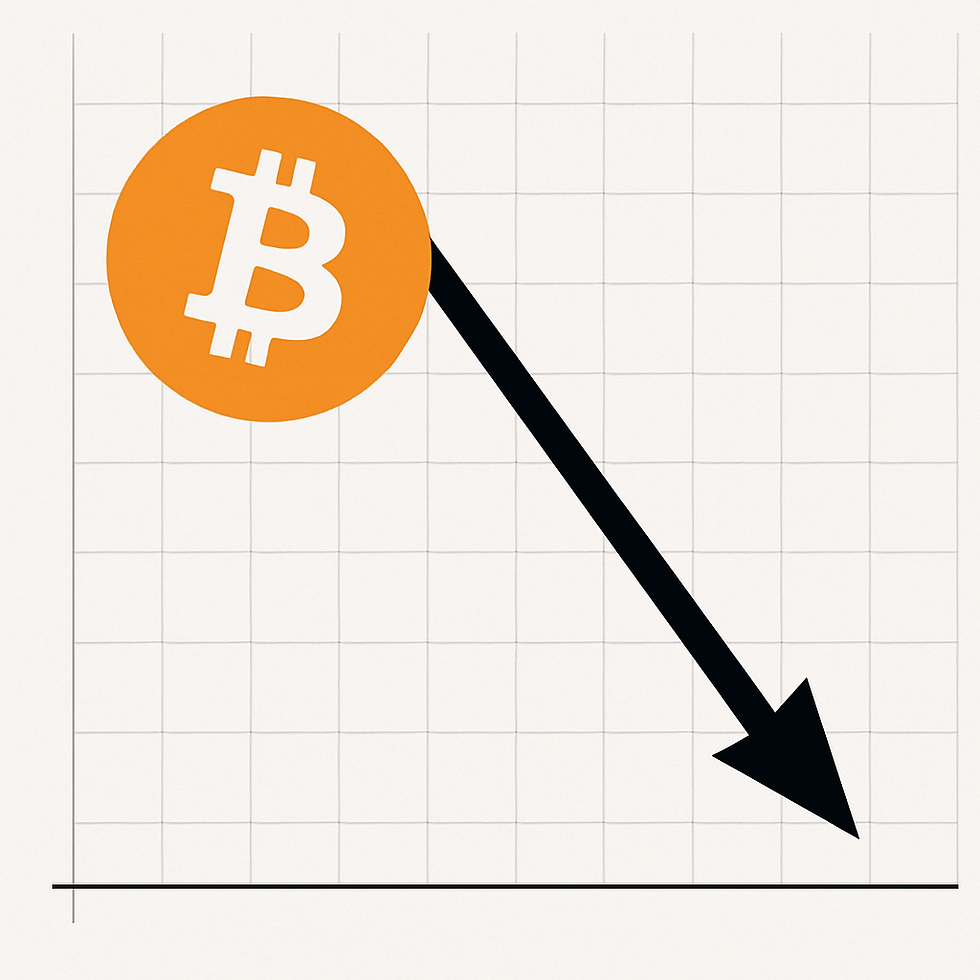The Spectacular Folly of MicroStrategy: When a Company Bets Everything on Speculation
- WireNews

- May 16
- 3 min read
by Ram ben Ze’ev

MicroStrategy Inc. (NASDAQ: MSTR) has become something of a poster child for Bitcoin fanaticism. Once known as a business intelligence firm, today it is better understood as a high-stakes proxy for digital gold speculation. The company no longer lives or dies by the merit of its software—it survives on the volatile tides of Bitcoin. Its CEO-turned-evangelist, Michael Saylor, has led this transformation by converting nearly the entire balance sheet into a bet on a digital token with no intrinsic value, no yield, no utility, and no economic backing beyond belief.
This is not strategy. This is madness.
A Company Without a Business
Let’s be clear: MicroStrategy’s core business is a shadow of its former self. The company has not seen meaningful growth in its software segment in years. Instead, it has borrowed heavily—issuing junk-rated convertible debt and tapping equity markets—not to expand operations, improve products, or hire talent, but to buy more Bitcoin. As of now, it holds over 1% of all Bitcoin in existence, purchased at an average cost that barely remains in profit. Any substantial downturn in price puts its entire structure at risk.
MicroStrategy is no longer a technology company. It is a glorified, leveraged Bitcoin trust masquerading as an operating business.
And despite the bold rebranding as simply “Strategy,” the company’s legal name remains MicroStrategy, Inc.—which, given its reckless all-in gamble on Bitcoin, is perhaps unintentionally fitting. After all, there’s nothing strategic about betting the farm on a meme… unless by “Micro” they meant the size of the strategy.
The Illusion of a “Store of Value”
Bitcoin, the asset in which MicroStrategy is all-in, is often touted as a hedge against inflation, a store of value, and “digital gold.” In practice, it has behaved more like a speculative token with a cult following. Its lack of utility is its most glaring flaw—no industrial use, no backing by any sovereign, and no ability to generate yield. A true investment offers something tangible: a dividend, rental income, or productive output. Bitcoin offers nothing but the hope of selling to someone else for more.
Bitcoin’s fixed supply—21 million coins—has become a talking point used to promote its supposed scarcity and value. But scarcity alone does not make something valuable. Beanie Babies were scarce. Tulips in 17th century Holland were scarce. Scarcity without utility is hype without foundation.
And the numbers prove it. After every euphoric run-up—2013, 2017, 2021—Bitcoin has collapsed, losing between 25% and 70% of its value. Every time. Each cycle ends in mass liquidations and dashed dreams. And who suffers most? Not the whales, not the institutions—they hedge, they dump at the top, they write off losses. It’s the smallest investors, the ones who bought in at inflated prices hoping to change their lives, who are left holding the digital bag.
A Fool and His Money
Ironically, famed short-seller Jim Chanos recently announced that he is shorting MicroStrategy while simultaneously buying Bitcoin. On the surface, the trade may appear clever—betting against the most visible corporate Bitcoin bull while going long on the underlying asset. But the contradiction is glaring: MicroStrategy’s collapse would almost certainly drag down the very asset it holds, if only by way of sentiment and panic. This is no different than shorting the ark while buying a ticket for the voyage. As the old saying goes, a fool and his money are soon parted.
Why MicroStrategy Will Fail
This brings us back to MicroStrategy. A company’s job is to create value through products and services. MicroStrategy does none of that anymore. It borrows to speculate. Its financials are now tied to the whims of an unregulated, manipulated, 24/7 trading environment where a single tweet or ETF rumour can swing valuations by billions. What kind of responsible company aligns its fate with that?
As interest rates remain high and credit markets tighten, MicroStrategy’s debt burden becomes more dangerous. When the next Bitcoin crash comes—as history says it will—the company’s paper profits will vanish, its collateral will shrink, and its stock will plummet.
Already it trades more on the movement of Bitcoin than on earnings or innovation. That’s not value investing. That’s gambling with shareholder money.
Conclusion
MicroStrategy isn’t a pioneer. It’s a warning. A textbook case of what happens when a company confuses belief with business, when hype replaces substance, and when speculation becomes policy. And for investors—especially the small retail holders—it is a disaster waiting to happen.
Bitcoin may yet rise again. But so too may it fall. And when it does, MicroStrategy will fall even faster. The collapse will be painful, but not unexpected.
As always, the lessons will be learned too late—by those who can least afford the tuition.
>>>> BUY ME A COFFEE <<<<
###
Bill White (Ram ben Ze'ev) is CEO of WireNews Limited, Mayside Partners Limited, MEADHANAN Agency, Kestrel Assets Limited, SpudsToGo Limited and Executive Director of Hebrew Synagogue








